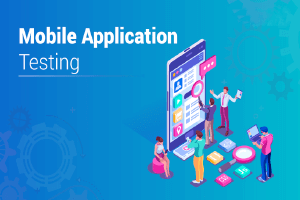The most popular mobile operating systems are Android & iOS. There are lots of applications developed for these platforms. You can perform some or all test cases for these applications based on your mobile testing needs. Test cases are almost the same but the testing methods may differ for different smartphones.
Why Mobile Testing is necessary?
Businesses are focusing on mobile strategies before implementing the application for their users. It has become more essential to develop an app with effective features and functionalities which are beneficial to the customer. But it is more crucial to have an efficient testing plan and strategy before an application is produced. As a client is always precious for a product, and a product with bugs is never appreciated. It often results in monetary losses, legal issues, and brand image damage.
How complex is Mobile Application Testing?
Mobile Testing is not an easy task. It is different and much more complex from other testing techniques. Mobile Testing requires testing on many software platforms, versions, hardware, network condition and on the various devices, fast-changing mobile OS, new devices, and simulators.
- Different screen sizes, Hardware configurations – Keypad, Touch Screen and trackball, etc.
- Varieties of mobile – Apple, Nokia, Samsung, LG, Redmi, Oppo, etc.
- Different Mobile OS – Android, Symbian, Windows, Blackberry and IOS.
- Different versions of OS – iOS 5.x, iOS 6.x, BB5.x, BB6.x etc.
- Mobile Network Operators – CDMA & GSM
- Version updates – Android- 4.2, 4.3, 4.4, iOS-5.x, 6.x – with each and every update a new QA Cycle is preferred to make sure no application functionality is affected.
Mobile Application Testing approaches
There are lots of applications designed for Android & iOS platforms. Some of the Testing approaches are given below:
- Automation Testing: Automation testing is the first approach for mobile application testing. Testing in the world of mobile applications creates a set of challenges due to the massive number of mobile devices. Mobile automation testing has become an essential part of mobile app testing.
- Manual Testing: Manual testing is a human process, which is mainly focussed on user experience. It ensures that an application is meeting the requirements and its user-friendliness. This type of testing is usually time-consuming because sometimes it takes time to find the bugs.
- Functional Testing: Testing of Mobiles generally depends on the areas of user requirements. Type of application depends on the usages like – Banking, Gaming, Education & Consumers.
- Performance Testing: The objective of Performance Testing is to ensure that a huge number of users can access the app simultaneously. The performance of an application will not go down if the network gets changed to WiFi from 2G/3G/4G or vice versa. To check the network performance while moving around from one place to another place.
- Security Testing: The purpose of security testing is to guarantee that the application will not give permission to an attacker to access delicate content or functionality without proper authentication.
- Usability Testing: Usability Testing is a non-functional testing technique to check how a user can comfortably use the particular application. It is the best way to understand real-time user experiences.
- Compatibility Testing: Compatibility testing on mobile devices is performed to confirm different sizes, resolutions, screens, versions, and hardware, etc. So, the mobile testing should be done for all the devices to make sure about the application working perfectly and it is as per the requirements. Compatibility Testing gives an assurance that while ringing a call/alarm, the application will be minimized or suspended on the event of a call and whenever the call gets disconnected the application will resume.
Types of Mobile Testing
- Mobile Device Testing: This is the assurance for the quality of mobile devices. It includes processors, other hardware, different screen sizes, resolution, camera quality, radio quality, Bluetooth, memory space allocation, mobile data, WiFi, etc.
- Application Testing: Testing the applications and their functions that are working on mobile devices. It is called the “Mobile Application Testing” to differentiate it from the Mobile device testing.
- Native Applications: Native apps are created to use on a platform like – mobile and tablets. These applications get installed on the devices and generally delivered from the App Store.
- Web Applications: Web apps are accessible using a browser on the mobile device or server-side applications to access websites on mobile using different browsers like Mozilla Firefox, Chrome, Safari, Opera by connecting to a mobile network or WiFi.
- Hybrid apps: Hybrid apps are combinations of native apps and web apps. Hybrid embeds a browser in a native application. These also run on devices, online or offline.
It is very challenging to verify applications across multiple handsets with different screen sizes and operating systems. Hence, testing teams should find better and more cost-effective solutions to avoid any compromise in quality.
Importance of Mobile App Testing
The user generally decide which app to download after considering two things –
- Reviews
- Ratings
Mobile phone users install new applications on the basis of their ratings and reviews which directly shows how well your application is performing. That’s why mobile application testing is becoming more important day by day. Mobile phones with different operating systems, processing, capacity & screen sizes. Testing became mandatory in the software development process. New features keep users entertained and close to the business while quick bug fixing makes sure that nobody would want to uninstall your app.
StudySection provides a Windows 10 certification exam to help those with skills in Microsoft Windows 10 operating system. This exam is available for two different levels namely “Foundation” and “Advanced”. This Windows 10 certification can help you land in a good job position when attached to your resume.




